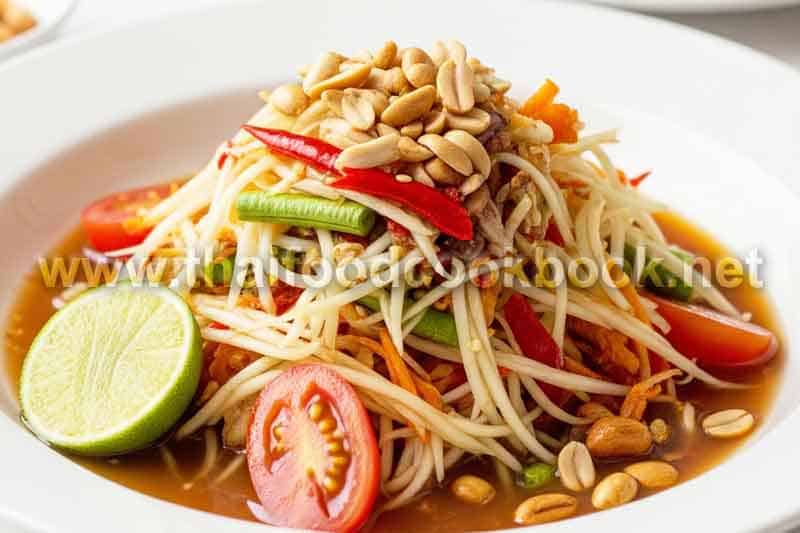How Som Tum Became One of the World’s Best Salads
Som Tum, known worldwide as a flavorful and spicy Thai green papaya salad, has become a culinary icon far beyond its humble origins. While many adore its bold taste, understanding how this dish gained global fame involves looking into cultural history, culinary evolution, and international appreciation. From the northeastern region of Thailand to tables around the world, the rise of Som Tum offers insights into how traditional recipes adapt and thrive globally. This article explores the journey of Som Tum, including its significance in Thai cuisine and how it became recognized as one of the best salads worldwide.
The Cultural Origins of Som Tum in Isan Cuisine
Som Tum’s roots are deeply embedded in Isan, the northeastern region of Thailand, where the dish originated as a staple street food and everyday meal. Known for its refreshing and spicy flavor profile, the salad uses shredded green papaya, bird’s-eye chilis, fish sauce, and lime juice, embodying the bold tastes of Isan culture. The region’s local ingredients and traditional mortar-and-pestle preparation method contribute to Som Tum’s authentic flavor.
- Use of fresh, locally sourced green papaya and herbs
- Incorporation of fermented fish sauce (Pla Ra) enhancing umami
- Preparation with a traditional wooden mortar and pestle
This connection to place and culture has preserved the dish’s identity while allowing it to evolve as it spread across Thailand and beyond.
How Som Tum Evolved into an International Favorite
As Thai cuisine gained international recognition, Som Tum emerged as a standout salad thanks to its unique balance of sour, sweet, salty, and spicy flavors. The adaptability of the dish has made it popular globally:
International adaptations of Som Tum include:
- Variations with seafood, such as shrimp or crab
- Vegetarian and vegan versions substituting fish sauce
- Regional twists incorporating local produce and spices
These adaptations allow Som Tum to resonate with diverse palates, helping it become a staple in Thai restaurants worldwide and a celebrated dish in global food culture.
Factors Contributing to Som Tum’s Global Popularity
Several key factors helped propel Som Tum to international acclaim as one of the best salads:
- Distinctive Flavor Profile: Its bold combination of spicy heat, tangy lime, and savory fish sauce appeals to adventurous eaters.
- Healthful Ingredients: Fresh vegetables and herbs contribute to a nutrient-rich dish.
- Versatility: Easily customizable to suit dietary preferences and ingredient availability.
- Street Food Appeal: Accessibility and affordability add to its charm globally.
Together, these elements created a recipe for success that crossed cultural and geographical borders.
The Future of Som Tum in Global Culinary Trends
Som Tum’s journey from Isan markets to international menus continues with exciting innovations and sustainability efforts:
- Incorporating organic and locally sourced ingredients worldwide
- Fusion dishes blending Som Tum flavors with other cuisines
- Promotion of authentic preparation methods to preserve tradition
As food culture evolves, Som Tum’s role as a fresh, vibrant, and culturally rich salad is poised to grow even further in popularity.
Conclusion: Celebrating Som Tum’s Rise as a Global Salad Icon
From its cultural origins in northeastern Thailand to becoming a global culinary sensation, Som Tum exemplifies how traditional dishes can captivate the world. Its unique flavor, adaptability, and cultural significance make it one of the world’s best salads. By understanding its history and evolution, food lovers everywhere can appreciate the rich heritage and enduring appeal of this iconic Thai dish.


